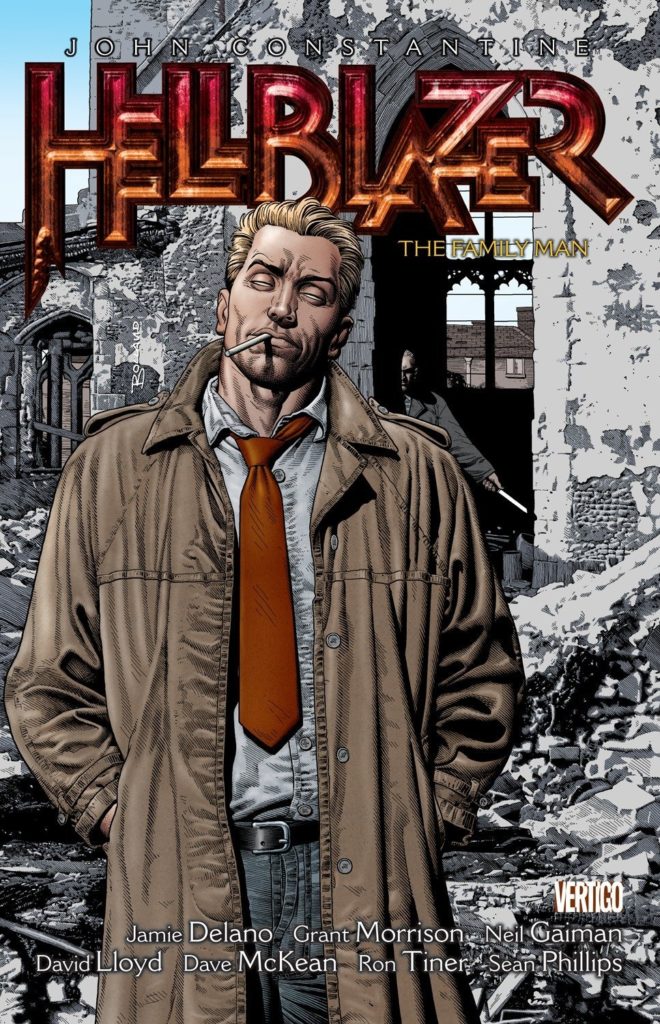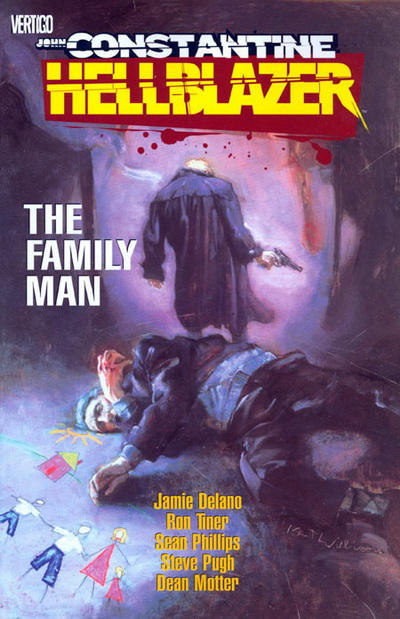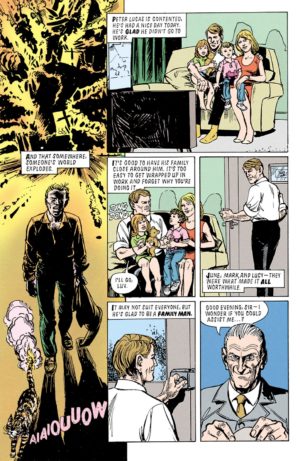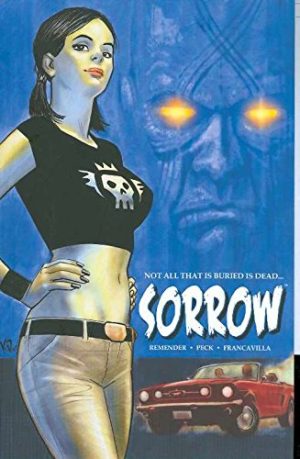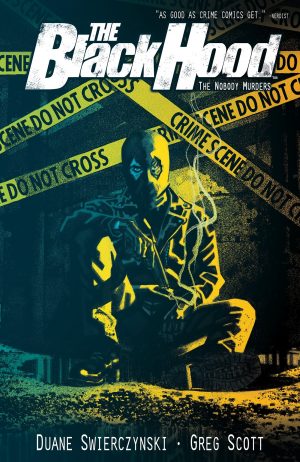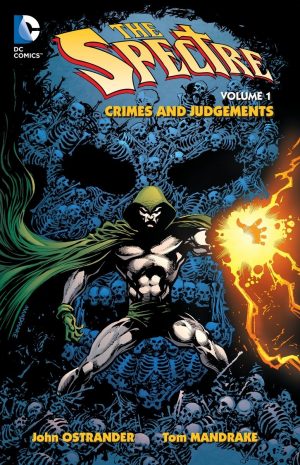Review by Karl Verhoven
Jamie Delano’s Hellblazer constantly shifts from one type of horror to another, which engages. The Family Man is very different from The Fear Machine before it, and Delano’s contribution to Dangerous Habits after it. It’s John Constantine under pressure and under threat.
Over three previous Hellblazer collections Delano has shown Constantine’s talent for befriending eccentrics, the oddities of scorned by others yet fountains of knowledge to those who take the trouble to know them. Jerry is one, “always been a bit larger than life. He could be mixed up in any manner of weirdness”. He is, but he’s just the way into ‘The Family Man’, as direct a distillation of the modern day serial killer as Hellblazer investigated under Delano. The name indicates the killer’s preference, the destruction of happy families, and as drawn by Ron Tiner he’s an extremely unsettling personality with hard, piercing eyes. He’s seemingly based on British actor Peter Vaughan, best known for the part of Harry Grout in prison comedy Porridge, and the recognition of that instantly adds a sinister veneer. Delano spends a considerable time defining the killer, in effect rubbing our faces in his banality, his personality only out of the ordinary in one way, and sets up an effective game of cat and mouse, with Constantine and the Family Man each stalking the other. It represents Delano’s view of Constantine. Later Hellblazer writers would have him solve this problem with ease, a little bit of hocus pocus washed down with a bottle of Jack, but Delano’s Constantine has a greater vulnerability.
Tiner’s art has a grubbiness about it, distilled slightly by Kev Walker’s inking. It’s limited, but exactly right for the seedy tone of the entire story, and the final chapter’s just too clean when fixed up a little by Mark Buckingham.
The collection raises the question as to what level of authenticity should be maintained when presenting a run of issues ‘The Family Man’ was designed as a story over five chapters, but when serialised in 1990 there were some production problems, causing it to be interrupted for three months during which other creators supplied fill-ins. Instead of cementing the error, wouldn’t ‘The Family Man’ have been better served by running the entire story consecutively, and consigning the fill-ins to the back of the book?
What qualified as a fill-in in 1990 now matches the main attraction, given the career trajectories of the writers. Grant Morrison and David Lloyd channel the rural creepiness of The Wicker Man, but add a macabre modern twist by locating it in a town with a weapons research base nearby. All it needs is a curious scientists for a combustible mixture. In terms of horror there’s not much to choose between that and Gaiman’s offering, but Morrison nails Constantine’s character, very precisely over the final two pages as he shakes his head and moves on, while Gaiman’s interpretation is too caring. Despite the already noted propensity to embrace outcasts, the established Constantine wouldn’t find it within him to provide the closure required to end the threat. McKean’s art is neat, though, scratchy and shadowy, and he, Lloyd and Tiner make for one hell of an artistic stew.
Dissatisfaction with the running order apart, The Family Man is a generally strong collection, featuring the best of Delano’s longer stories and interesting back-ups.
